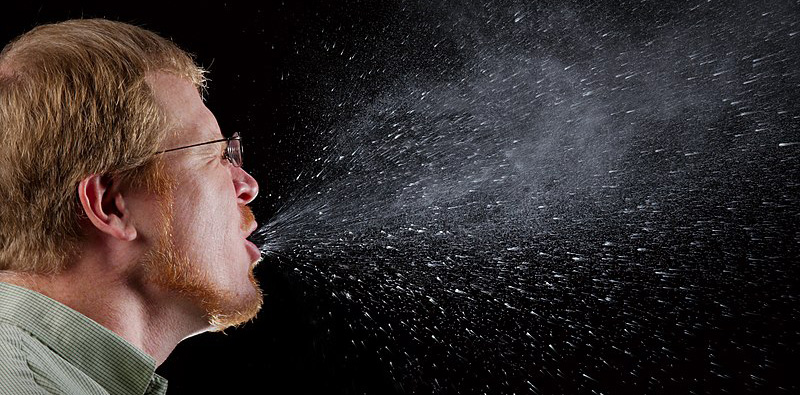A vaccine for both influenza A virus and pneumococcus would not only save lives, but also spare antibiotics used to protect against secondary pneumococcal infection
With 100 flu deaths even before the start of the 2019 season, and the ever-present threat of a pandemic, it’s nice to imagine a universal vaccine: one that protects not only against every flu virus from this and future seasons, but also every form of its lethal travelling companion, pneumococcus.
It sounds like magic, but that’s what Dr Mohammed Alsharifi and his team from the University of Adelaide’s Research Centre for Infectious Diseases expect to achieve – albeit not for some years.
Their latest paper, published in Nature Microbiology this month, brings them a step closer by demonstrating that, in animal models, a combined vaccine of whole gamma-irradiated influenza A virus and bacteria not only confers immunity to both but enhances the immune response to the virus, while previous work has shown an enhanced response to pneumococcus.
The work is so far only in A, which causes the bulk of illness in humans most years.
In a new finding Dr Alsharifi describes as “astounding”, they attribute this to direct binding between the two pathogens.
Dr Alsharifi, who lectures in virology and immunology and has been working on the universal flu vaccine problem for 15 years, hopes the pneumococcal component will be in human trials next year, with the influenza component several years after. The ultimate goal of a combined vaccine is further away still.
The key to producing immune memory that withstands influenza’s seasonal antigenic drift is in the inactivation method. Gamma-irradiation, unlike chemical or UV inactivation, destroys only the genetic material in the virus, leaving the rest intact. That produces a cell-mediated immune response, using cytotoxic T-cells, rather than the humoral or antibody response generated by the seasonal vaccine.
“Current vaccines target surface molecules [haemagglutinin and neuraminidase], which are subject to frequent changes,” Dr Alsharifi told The Medical Republic. “[That] protocol is dealing with completely destroyed virion, which stimulates immune system in a different way that will never give you cross-protection because it will never give you cell-mediated immunity.
“Our approach [elicits a response to] the conserved part of the virus, so the protection we induce will be universal, regardless of mutation, regardless of human, bird or swine.”
Nuclear physicists from the Australian Nuclear Science and Technology Organisation have been involved, and the International Atomic Energy Agency has also shown a keen interest.
To make the pneumococcus vaccine, the team used gamma-irradiated bacteria with its capsule removed – the capsule accounts for all the variation among the 98 or so serotypes – and some genetic modification for safety. They found it conferred serotype-independent immunity in mouse models.
It was the cocktail of the two that produced some unexpected magic in the form of a two-way enhanced immune response.
“We dug deep and we discovered physical direct interaction between flu and pneumococcus pathogens,” Dr Alsharifi said. “That is the key. Once they interact they influence immune stimulation to each other, because now the way those two vaccines being detected by our immune systems is completely different.”
The implication is that, in a natural infection, the flu binds with pneumococcus already in the nose mucosa, and this extra-pathogenic two-for-one package is spread by sneezing. The irradiated versions also bind together, which is why there’s a different immune response when the vaccines are administered together than when they’re administered separately.
A vaccine for both would not only save lives, but also spare antibiotics currently prescribed for influenza to protect against secondary pneumococcal infection.
University of Queensland Associate Professor Ian Mackay, a virologist with the Australian Infectious Diseases Research Institute, said “cautious optimism” was warranted.
“We desperately need an improved ‘universal’ flu vaccine which can offer long-term protection against multiple strains, avoiding the problems inherent to using highly variable bits of a virus as the bait to trigger an immune response,” Associate Professor Mackay, who was not involved in the research, told The Medical Republic.
“A vaccine like this, which retains as many components of the pathogen as possible, is likely to best reflect the host response to fighting off a natural infection. A vaccine that induces the production of both antibodies and immune cells provides good immune memory and protection, as this new approach appears to do.
“We are still a long way from knowing how safe this approach will be in humans. Could this immune response be overly strong in humans? Once human trials are conducted, we will have a better idea of how revolutionary this approach is.”
Nature Microbiology, 21 May


